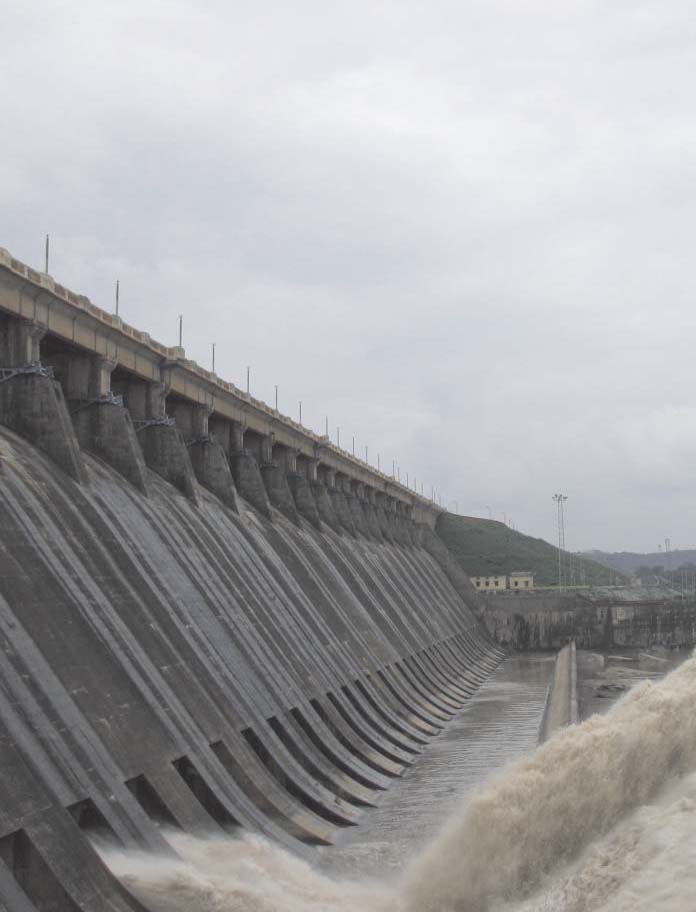/topics/irrigation
Irrigation
From ripple to a tide – A film by SDTT on its work with local NGOs and communities on diversion-based irrigation
Posted on 01 Dec, 2012 10:52 AMPart I: From ripple to a tide, a film by SDTT
National conference by IRRAD and UNICEF on women-led water management: Strategies towards water sustainability in rural India
Posted on 22 Nov, 2012 05:07 PMThe Institute of Rural Research and Development (IRRAD) and UNICEF India hosted this National Conference on Women-led Water Management .
Groundwater status of arid tehsils of Sirohi district of Rajasthan state- An article in Bharatiya Vaigyanik evam Audyogik Anusandhan Patrika (BVAAP)
Posted on 17 Nov, 2012 10:54 PMThis article published in the Bharatiya Vaigyanik evam Audyogik Anusandhan Patrika (BVAAP) informs that understanding the soil and water resources is the first step towards carrying out agriculture in a sustainable manner.
Floods, fields and factories: Towards resolving conflicts around the Hirakud Dam
Posted on 27 Oct, 2012 08:13 PM This action research report by the Forum for Policy Dialogue on Water Conflicts in India maps the variegated issues contributing to the water conflicts ar
This action research report by the Forum for Policy Dialogue on Water Conflicts in India maps the variegated issues contributing to the water conflicts ar
Dugwell - An asset for sustainable livelihood: An Arghyam and Action for Social Advancement (ASA) project carried out in 2 tribal bocks of Ratlam district in Madhya Pradesh
Posted on 27 Oct, 2012 10:44 AMAt the same time we also need to keep in mind the judicious use of natural resources, especially in rain-fed areas. Integrating sustainability and demand is one of the greatest challenges faced by communities and nations today.
Kerala and Karnataka's lesser known rainwater harvesting structures
Posted on 16 Oct, 2012 03:09 PMMadakas are one of the fast disappearing traditional rainwater harvesting structures found in the laterite belts of Karnataka and Kerala. They are naturally occuring depressions with high terrain on the three sides where water from the surrounding laterite slopes, mainly runoff from the rains, is accumulated.

Surangas, the disappearing lifeline of the farmers of Kasargod, Kerala
Posted on 10 Oct, 2012 09:22 AMSurangas continue to be one of the relatively less known and gradually disappearing traditional water harvesting systems of Kasargod district, Kerala and are being gradually replaced by borewells to meet the water needs of the community.
"Protests rock Cauvery basin as Karnataka releases water to Tamil Nadu in keeping with Supreme Court directive" - Roundup of the week's news (24-30 September 2012)
Posted on 09 Oct, 2012 04:10 PMProtests rock Cauvery basin as Karnataka releases water to Tamil Nadu in keeping with Supreme Court directive
River and people on collision course
Posted on 05 Oct, 2012 05:11 PMThis bilingual book written in Hindi and English appearing side-by-side titled “Bagawat par majboor Mithila ki Kamla nadi” and “Kamla: River and the people on collision course” respectively attempts to study the irrigation and flood control schemes that were taken up in the Kamla basin following independence and depicts how people have been left in a blind alley.
Voices from the Waters - The International Film Festival organised at Bangalore from the from the 31st August 2012 to 2nd September 2012
Posted on 05 Oct, 2012 04:29 PMHistory has witnessed World War I and II; will there be a World War III? Indeed, if there will be, it will be 'The World War III - for Water'. Can there be a second thought to this after the call for a Karnataka bandh on Saturday, 6 October 2012, in the name of water?




